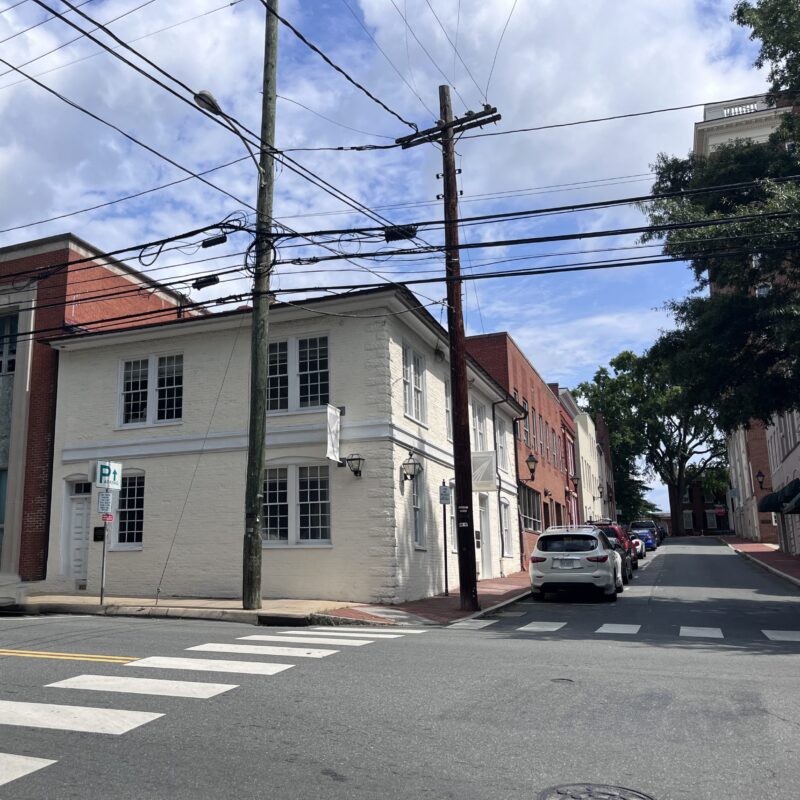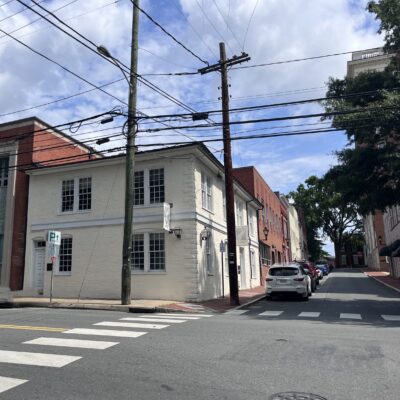“Since 1983, the people in Woolen Mills have been trying to establish a national historic district,” says photographer Bill Emory. In 2006, he started a nonprofit for just such a reason and a correlating website, HistoricWoolenMills.org. That year, he also began to look into a piece of property that sits west and stretches back south of his house on E. Market Street and is occupied in part by a historic house. The parcel’s owner, Preston Coiner, was attempting to subdivide part of the parcel in order to build residences on its middle half. As part of his research into the property, Emory made a discovery.
 Bill Emory and Victoria Dunham have taken on the city over a Woolen Mills property that erroneously was left off the list of individually protected properties. |
On October 18, 1993, the City Council designated an approximately seven-acre parcel surrounding the house as an individually protected property under the city’s “Historical Preservation and Architectural Design Control Overlay District.” This meant that any construction, restoration or alteration of structures on that parcel or any future subdivisions thereof required a hearing before the Board of Architectural Review, a board Coiner belonged to until this month.
Despite the property’s status, Coiner had subdivided the parcel and redrawn its boundary lines on various occasions. In 2001, he built several self-storage units on the south of the parcel. As Emory dug into the property’s records, he found that 2001 was also important for another reason. When the historic property was subdivided that year, a city staffer had apparently forgotten to add the new parcels to the protected properties list. Two years later, when the city undertook a broad rezoning of Charlottesville, no one caught the mistake.
At first, Emory and Victoria Dunham, co-president of the Woolen Mills Neighborhood Association, went to Neighborhood Development Services with their discovery and on February 23 of last year, the city Zoning Administrator issued a letter in which he concluded that a technical mistake had indeed resulted in the removal of the zoning. Regardless, he recommended that the matter be resolved before the Board of Zoning Appeals, which then determined that they had no jurisdiction. So Emory and Dunham filed a lawsuit against the city, seeking determination of the zoning. “We wanted to keep this really quiet,” says Dunham. “You don’t want to go around antagonizing anyone.”
The city tried to get the suit dismissed, but on January 10, 2008, city Circuit Court Judge Edward Hogshire ruled in favor of Emory, allowing his counsel to file a motion to amend the suit to enjoin City Council for the 2003 failure to include the protected status. As they wait for their case to work its way through the system, Emory and Dunham maintain that they are not against development but are simply trying to bring the property under the distinction it was bestowed back in 1993.
“No one is taking anything from the owner,” Dunham says. “No one is removing any of his rights.”
C-VILLE welcomes news tips from readers. Send them to news@c-ville.com.





